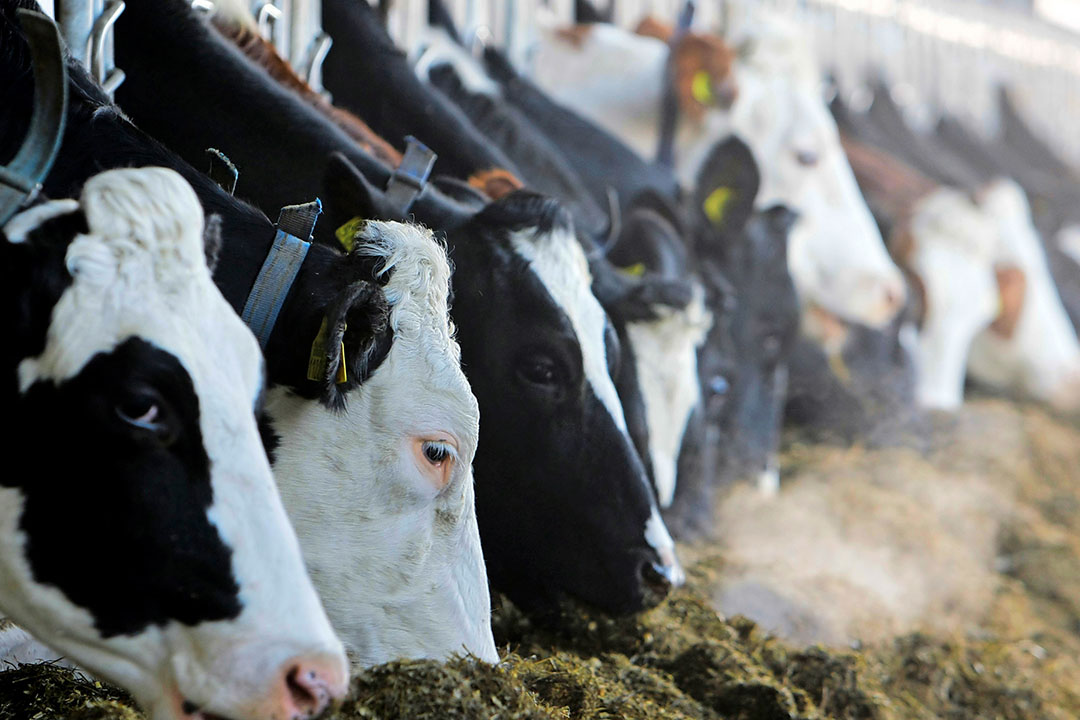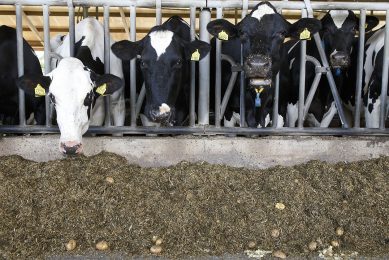Effects of feeding frequency on dairy cattle

Feed delivery frequency is an important strategy in modern dairy management, as it affects feed intake, digestive physiology, animal health, hormonal profile, milk production, resistance to thermal stress and economic returns. This article provides a review of these aspects and their responses to different feeding frequency levels.
It was found that increasing the frequency of feed provision (2x) increases the amount of time cows spent feeding each day and also changes the distribution of daily feeding time, resulting in cows having more equal access to feed throughout the day compared to the situation when feed is provided only once per day. Another result of feeding twice per day was that less feed sorting occurred. When dairy cows sort feed, they usually select the finer and/or smaller particles. In one study, there was 8% more forage remaining in the bunk when the cows were fed once compared to when they were fed twice. Since longer particles are a significant source of fibre, sorting increases the risk that cows will not consume adequate fibre to maintain healthy rumen function.
Rumen functions
When animals are fed 5-6 times per day, there will be a stable pH in the rumen at levels ranging from about 5.5 to 5.8, but when they are fed only 1-2 times per day, the pH will vary from about 5.1 to 7.1 within the same day. With a stable pH value in the rumen, the digestibility of dietary fibre will be increased due to the increased microbial activity in the rumen, which results from the increased energy level needed for such activity. High-frequency feeding also reduces the amount of ammonia produced in the rumen following digestion of protein, indicating low rates of degradable protein formation and high rates of non-degradable protein, which is used for productive purposes. The increased ratio of non-degradable protein relative to the degradable protein in the rumen can probably be attributed to the increased rate of passage of digesta from the rumen with high-frequency feeding allowing insufficient time for degradation.
Metabolic disorders
There has been some concern that providing feed once a day may result in slug feeding, which could predispose a cow to sub-acute rumen acidosis. Alternatively, more frequent offerings of feed may result in cows spreading out their feeding times more evenly throughout the day. Further, a steady input of nutrients into the rumen over the course of the day should benefit rumen function, which in turn may reduce the risk of sub-acute rumen acidosis.
Hormonal changes
There are a number of hormonal changes associated with feeding frequency (Table 1). The increased production of growth hormones in the 4x group resulted in a daily gain of 1.40kg while those in the 1x group gained 1.27kg per day with similar feed intake levels. The reduced insulin secretion with frequent feeding helps produce carcasses with more muscle and less fat since insulin is positively related to carcass fat formation. Also, lower production of thyroid hormones with frequent feeding helps reduce the metabolic rate and heat increment and hence improves energy utilisation for growth and other productive purposes.
Milk production
In one study, milk production was increased by 3% when feeding frequency was increased, probably because of the increased feed intake. Milk fat concentration also increases by 8% with frequent feeding, mainly due to the consumption of larger amounts of fibre, as explained above. With increased fibre consumption, there is increased production of acetic acid in the rumen, which acts as a precursor of milk fat synthesis. There was no evidence, however, that concentrations of milk protein and lactose can be affected by changes in feeding frequency.
Mitigation of thermal stress
Increasing feeding frequency should reduce heat production because it promotes a uniform rate of absorption of nutrients and spreads the total heat increment due to feeding over a longer time period. Frequent feeding of heat-stressed cows also helps prevent the problem with milk fat by maintaining uniform rumen fermentation and permitting a higher intake of concentrates without a decrease in the rumen pH or the acetate-to-propionate ratio. During winter, animals are exposed to low-temperature extremes and windy and wet weather. These variables can double their daily calorie needs and, if these are not met, this could result in sickness and a greater risk of death, especially in young calves. By consuming smaller volumes more frequently, calves can better fend off diarrhoea or digestive disturbances at any time of year.
Profit potential
It was reported that 97.1% (34 of 35) of the calves in the 3x feeding group entered the milking string. In comparison, 80% (28 of 35) of calves fed twice per day entered the milking herd. This means that for every six calves fed three times a day one additional heifer entered lactation. Calves fed three times per day also averaged 516kg more milk and calved 16 days earlier. This can translate to improved herd longevity, while increasing the number of replacement heifers that successfully make it to the milking line.











